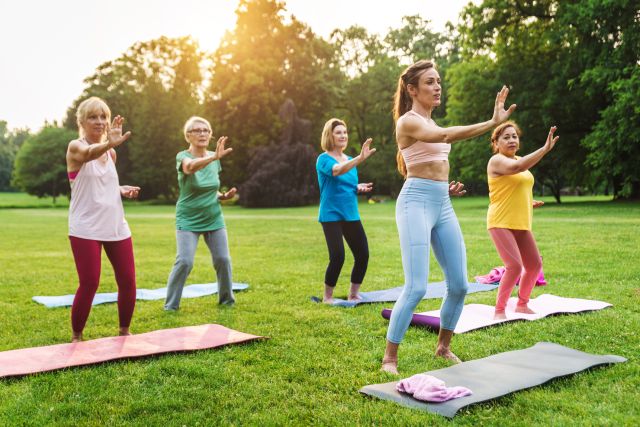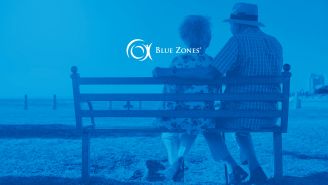Updated on November 7, 2023.
You don't have to run marathons or enter triathlons to get fit. There are gentler ways to exercise and many of these methods hail from the East.
Research has shown that certain exercises originating in Eastern cultures can offer just as many physical and psychological health benefits as the more vigorous exercises that often dominate Western workouts. Even better, these Eastern exercises tend to be easier on the body. For example, the gentle art of tai chi not only can help build muscle but it has been shown to help reduce arthritis symptoms and improve your balance.
Whether your goal is to reduce stress, make your muscles strong and flexible, or boost your weight-loss efforts with extra calorie burning, you may find what you're looking for in Eastern-influenced exercise disciplines, such as yoga, tai chi, or qigong (chi-gong).
What's your fitness goal?
Not all Eastern exercises are alike and it may take some shopping around to find the one that suits you best. The great thing about exercises such as yoga and tai chi, however, is that you can easily tailor the activities to fit your personal fitness needs and abilities.
Some classes even focus on moves that are best for a particular group, such as older adults or children.
You don't have to twist yourself into a pretzel or chant a mantra if you don't want to. There are many variations of classes and instructors. Some focus on the spiritual, others are pure workout, and still others balance the two. Some classes closely mirror the original Eastern philosophies and postures, while others are modified to incorporate more Western attitudes and exercise goals. Take your time and sample different varieties until you find a class that you love.
Your first option is to try out some classes at your gym or community center. If you haven't exercised in a while, it's a good idea to check with your healthcare provider (HCP) before beginning any new exercise program.
So which style of Eastern exercise will help you meet your workout goals?
Goal: Reduce stress and prevent disease
Just about any kind of regular exercise can reduce stress levels. For extra help, however, choose Eastern exercises that incorporate meditation. Meditative exercises that significantly reduce stress can bring the added benefit of disease prevention. These include:
- Kundalini yoga: Yoga is a discipline that connects the mind, body, and spirit by requiring you to move through different physical postures while meditating and focusing on your breath. There are many different styles of yoga, and Kundalini is a meditative form of yoga. It focuses on breathing and meditation while mixing in classic yoga poses.
- Qigong (chi-gong): Qigong is an exercise that focuses on the breath while incorporating meditation and slow, gentle physical movements. The focus is on breathing naturally, moving easily, and imagining energy traveling through your body.
Health benefits
Meditation can calm your nerves while significantly improving your health and it is an important aspect of many Eastern-based exercises. Just 10 to 20 minutes a day of meditation can lower your respiratory rate and help reduce stress. Reducing stress not only is important to your emotional well-being, but it's also an important part of disease management and prevention.
Stress ages your immune system, but managing chronically high levels can protect your immune system and may help you fend off illness as well as diseases such as metabolic syndrome, hypertension, and depression. According to one study, people who practiced the meditative art of qigong daily for one month experienced significant improvements in their immune system function.
Goal: Increase strength and flexibility
Just about all styles of yoga build strength and flexibility. But you can focus on forms of Eastern exercise that incorporate stretching, holding poses, and gently exerting yourself for extra power. Try these forms:
- Iyengar yoga: Yoga is a discipline that connects the mind, body, and spirit by requiring you to move through different physical postures while meditating and focusing on the breath. With Iyengar yoga, you hold your postures for a longer period of time compared to other yoga styles, which helps build more physical strength. Start with a beginner class.
- Tai chi: While not a form of yoga, tai chi shares some characteristics. It's a meditative exercise that requires you to pay close attention to your breathing while completing a series of choreographed, slow, fluid and continuous dance-like movements. It is a gentle physical exercise that is easy on the joints.
Health benefits
Multiple studies have revealed the ability of yoga to increase flexibility and strength. Being strong and flexible has a host of beneficial effects on your overall health, including helping to maintain your energy levels, improving your ability to accomplish daily tasks, and reducing your risk of injury. Strength and flexibility are vital for balance and minimizing falls. Tai chi also is used to improve balance and strength and is particularly effective for older people with strength and flexibility issues. Tai chi may also benefit the health of young and middle-aged participants. And the moderately intense aerobic element of this exercise has been shown to significantly reduce blood pressure.
Qigong offers similar health benefits to tai chi. Tai chi may offer a slightly better training effect than chi-gong because it's slightly more intense. But if you prefer the gentler qigong, it also has been credited with improving strength and flexibility and reducing blood pressure.
Goal: Lose weight or maintain a healthy weight
To burn calories and help manage weight, choose Eastern exercises that incorporate a cardio component or that require a higher level of exertion and incorporate meditation. These include:
- Ashtanga yoga: Ashtanga yoga moves practitioners quickly through a series of fluid, continuous poses, boosting the effort level required to complete the series. Start with a beginner class.
- Tai chi: While gentle, tai chi doesn't have to be slow. It is easy on the joints, but can also be used to burn calories.
Health benefits
Vigorous yoga styles such as Ashtanga will burn more calories than slower, gentler yoga styles while continuing to enhance your strength and flexibility. Burning excess calories can help you maintain a healthy weight, and a healthful weight can reduce your risk of many serious diseases, including heart disease and cancer. Losing weight also gives your psychological well-being a big boost.
If you are trying to lose weight, balancing out any calorie-burning activities you engage in with meditative exercises could bring quicker results. High blood levels of cortisol—a stress hormone—have been shown to increase body fat in the abdominal area. The stress-reducing quality of a combination aerobic/meditative exercise such as tai chi not only may help you burn calories but also help you relax.







